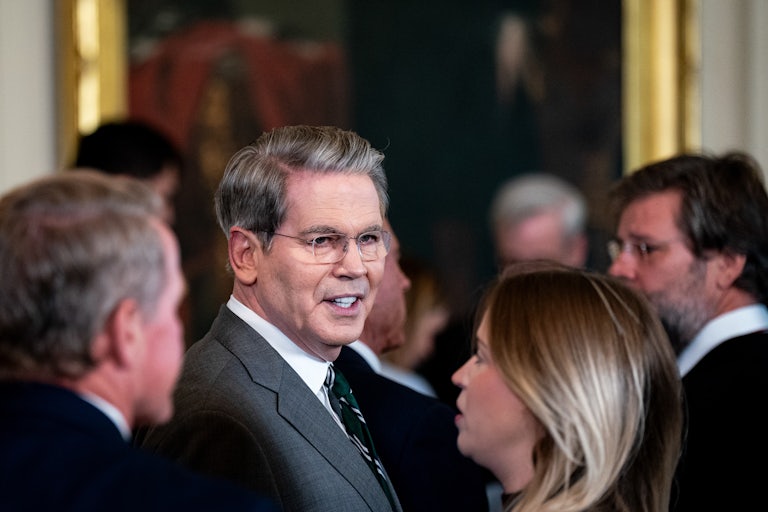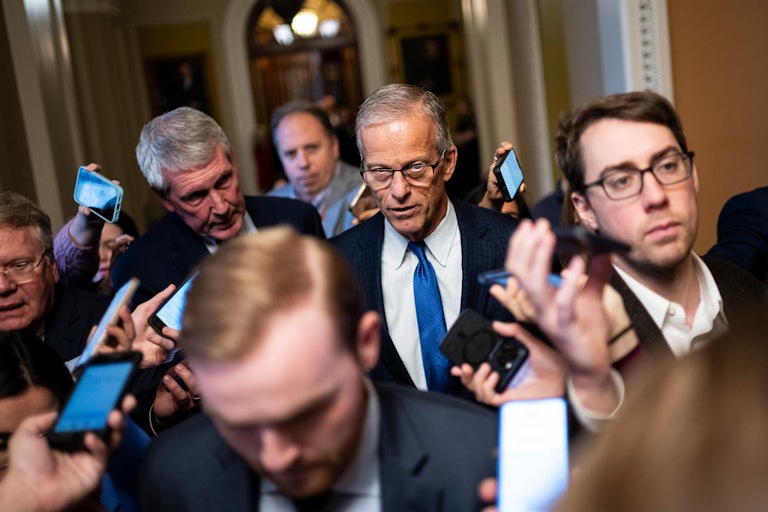Trump Makes Ridiculous Claim About Saudi Investment in the U.S.
Is Donald Trump just making up numbers at this point?

Saudi Arabia is so invested in U.S. development that the country’s leadership is apparently willing to give more than they’ve got.
Hours after the U.S. president penned a $1 trillion economic agreement with Crown Prince Mohammed bin Salman, Donald Trump told a crowd at the U.S.-Saudi Investment Forum Wednesday that he had actually pressed for $1.5 trillion, billions more than the nation’s gross domestic product.
“While we were taking the picture, I said, ‘Could you make it $1.5 trillion?’ So he’s got something to think about,” Trump said, to laughs. “We’ll get something, I think we’ll get something.”
Given that Saudi Arabia’s GDP is $1.24 trillion, that seems unlikely.
The deal came as an enormous upgrade to Saudi Arabia’s previously pledged investment of $600 billion, the details of which included “investments and trade” but were otherwise vague. It also came after Trump promised to sell highly coveted F-35 fighter jets to the newly appointed non-NATO ally, ignoring Pentagon concerns that the sale could provide China with a golden opportunity to steal U.S. military technology.
“We will be doing that, we’ll be selling F-35s,” Trump told reporters at the White House Monday, adding that the Saudis “want to buy them, they’ve been a great ally.”
Trump has touted several major investment deals over the span of his second administration to detract from the failures of his wildly unpopular tariff plan, claiming that he has reeled in $17 trillion in just eight months. But that figure is fiction, even according to the digits highlighted on the White House website, which lists $8.8 trillion in active investment.
That includes the Saudi sum, as well as $600 billion from firms in the European Union, though the coalition of countries has made clear that the amount is simply an estimate of potential investment rather than a legitimate commitment.
It also includes a $1.2 trillion deal with Qatar, which was an “economic exchange” rather than direct investment; a seemingly impossible $1.4 trillion investment from the United Arab Emirates that is more than double that nation’s GDP, and $1 trillion from Japan, which in actuality is roughly half that and will be predominantly composed of loans.








